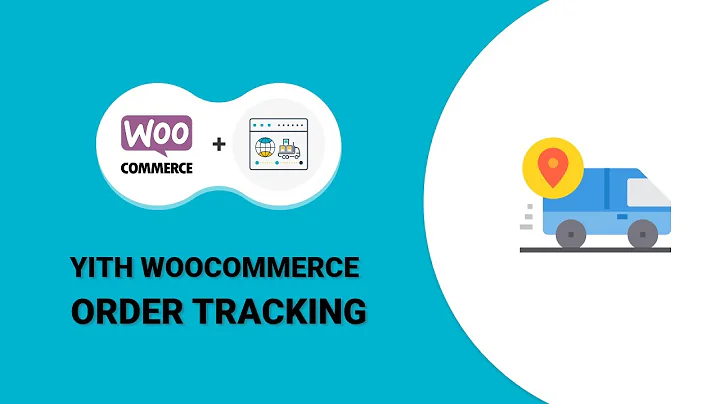From Shopify to Woocommerce: The Better Dropshipping Choice
Table of Contents
- Introduction
- My Journey with E-commerce
- Discovering dropshipping with Shopify
- The Darker Corners of the Internet
- Targeting the Travel Niche
- Selling Bohemian Goods and Jewelry
- Instagram Algorithm Changes
- The Decline of Organic Traffic
- Closing Down My Shopify Store
- Learning from Influencers
- Reviving My YouTube Channel
- Partnering with Gig Economy Companies
- Launching Gigsharks.com
- Exploring Woocommerce on WordPress
- The Equivalent of Oberlo for Woocommerce
- Setting Up and Managing a Woocommerce Store
- My Experience with Sales
- Finding Winning Products
- The Importance of Quick Shipping
- The Future of My E-commerce Journey
My E-commerce Journey: From Dropshipping to Woocommerce
E-commerce has become a popular avenue for aspiring entrepreneurs to start an online business. Like many others, my journey in e-commerce began a few years ago when I stumbled upon a persuasive YouTube video by an influencer. It convinced me that dropshipping with Shopify was the easiest and most profitable way to generate income online.
Intrigued by the idea of driving free organic traffic to my store, I delved into the darker corners of the internet to find a solution. That's when I discovered an online community at MPSocial, where I learned about Mass Planner. With this tool, I was able to create Instagram accounts, grow them organically, and drive traffic to my Shopify store almost entirely for free.
Targeting the travel niche, I started selling bohemian goods and jewelry sourced from AliExpress. While I wasn't passionate about these products, the profit margin made it worthwhile. I grew multiple travel niche accounts on Instagram, each with around 10,000 followers. This allowed me to drive significant traffic to my store and achieve monthly sales of up to a thousand dollars.
However, my success was short-lived as Instagram began cracking down on bots, which included all of my 30 accounts. The changes in the platform's algorithm made it increasingly difficult to drive organic traffic. Constant tweaks and adjustments were necessary to adapt to the new landscape. Eventually, the time and effort invested were no longer worth the diminishing returns, leading me to shut down my store.
But this setback didn't deter me from pursuing my entrepreneurial dream. Instead, I shifted my focus to observing and learning from influencers. I realized that they were making substantial revenue from ads on their YouTube channels, affiliate partnerships, and their own products. They weren't relying on Facebook ads as they advocated; instead, they sold directly to their audience, people like me who were easily swayed by their promises.
Returning to my old YouTube channel, which previously focused on the gig economy, I began creating content again. I grew the channel to over thirty thousand followers, leveraging my experience and knowledge in the field. This led to the launch of Gigsharks.com, a platform where gig economy workers can find job opportunities in their cities.
Partnering with prominent gig economy companies such as DoorDash, Postmates, Instacart, Uber, and Lyft, I monetized the website through advertising and affiliate programs. Whenever someone found a job through Gigsharks.com, I earned a commission. The website thrived, requiring minimal investment while generating significant returns. Dropshipping and online sales no longer held much appeal to me.
Despite my reservations, I couldn't resist exploring the idea of running a Woocommerce store on WordPress. Having used Shopify in the past, I was pleasantly surprised by how easy it was to set up Woocommerce. With the installation of a simple plugin, I had a fully functional online store on my website. Woocommerce streamlined the browsing, shopping, and checkout experience for customers, comparable to Shopify. The best part? It came at no additional cost since I already had hosting.
To facilitate dropshipping with Woocommerce, I found a plugin called "Drop Shipping and Fulfillment for AliExpress and Woocommerce." This plugin simplified the entire process, from product importation to order fulfillment. It was the equivalent of Oberlo and allowed me to seamlessly manage my store. The integration with AliExpress and the ease of fulfilling orders made it a viable alternative to Shopify's costly apps.
Woocommerce offered additional features that Shopify lacked. I had the flexibility to add related and upsell products, enhancing the customer experience. These features were included in Woocommerce for free, while Shopify charged additional fees or took a percentage of every sale. As a developer with coding skills, observing the simplicity and cost-effectiveness of Woocommerce was truly impressive.
With the Woocommerce store up and running, I embarked on a new journey. My sales, although not heavily advertised, were promising. In November alone, I made $262 without any advertising expenses. The success of my dropshipping store relied heavily on the products I chose to sell. Finding winning products was a trial-and-error process that required diligent research on platforms like AliExpress. I also had to ensure quick shipping times to maintain a positive customer experience.
While my website received around 10,000 visitors during the same period, it's essential to note that the majority of sales came directly from YouTube referrals. Gigsharks.com primarily served as a job board, making the dropshipping store a secondary revenue stream. The focus on high-quality products and exceptional customer service resulted in a profitable venture without compromising my existing brand.
As my e-commerce journey continues, I will continue to provide updates on my progress. Woocommerce has proven to be a cost-effective alternative to Shopify, allowing me to scale my store without expensive recurring fees. By prioritizing customer experience and carefully selecting winning products, dropshipping can still yield significant profits.
If you're interested in this method and have any questions, please leave a comment below. Depending on the level of interest, I'll be happy to create more videos and guides on this topic. Join me in finding the best ways to sell products at affordable prices and efficiently scale your e-commerce venture.













